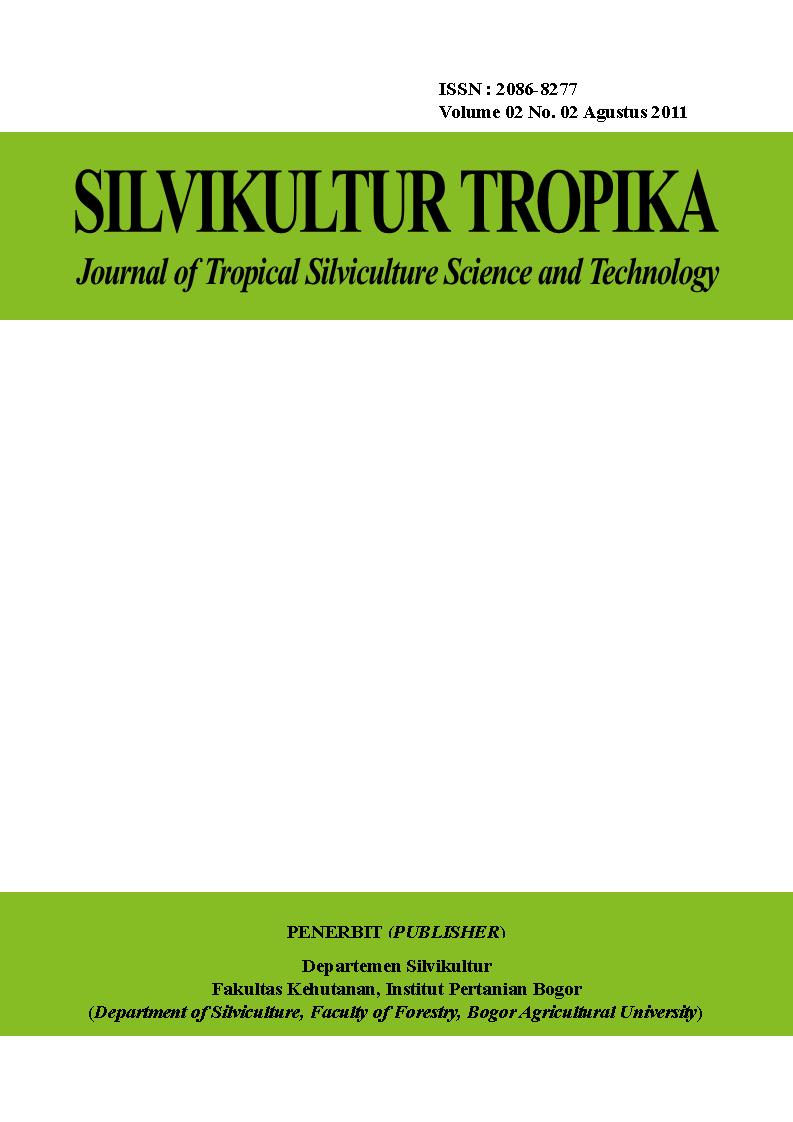Growth of Sandalwood (Santalum album Linn.) as primary plant in agroforestry system in Sanirin Village, Balibo Subdistrict, Bobonaro District, Timor Leste
Abstract
One of Forest and Land Participatory Rehabilitation Program (RHLP) is the implementation of agroforestry system. Agroforestry chosen as the solution of optimal land utilization so it would provide additional output value of either physical or financial results.This research aims to study more the growth of Sandalwood (S. album) as primary tree in some agroforestry. Field activities done at Sanirin Village, Balibo Sub District, and Bobonaro District. The observed dimensions of main crop were height, diameter, length and width of the tree canopy. Biophysical environmental conditions of soil properties and tree canopy closure were also observed. Data was taken from several agroforestry patterns. The data then analysed descriptively to the growth parameters of main crops associated with the pattern of developed agroforestry and its management techniques.
There are there types of agroforestry pattern, named AF1, AF2 and AF3. Each of AFs has combination of crops such
as AF1 combination of S. album,Tectona grandis L., Sweteniasp., Aquilarium sp., Cajanus cajan, Zea mays, Cucurbita pepo, AF2 combination S. album,Sesbania sp., Cajanus cajan, Zea mays, Cucurbita pepo and AF3 is combination of S. album, Tectona grandis L., Swetenia sp., Zea mays, Manihot utilisima. The AF3 has worst performance in height and diameter growth, while AF2 is having best performance in height and diameter growth. In the crown covered, the AF2 type is gained highest percentage compared to the others. The results showed that the growth of primary tree in agroforestry pattern to produce cassava is the lowest thanto the others .The availability of P and K elements suspected to be the cause of low growth of primary crop. Land management activities are only focused on the productivity of agricultural crops caused the crops and the main crop is uneven.










